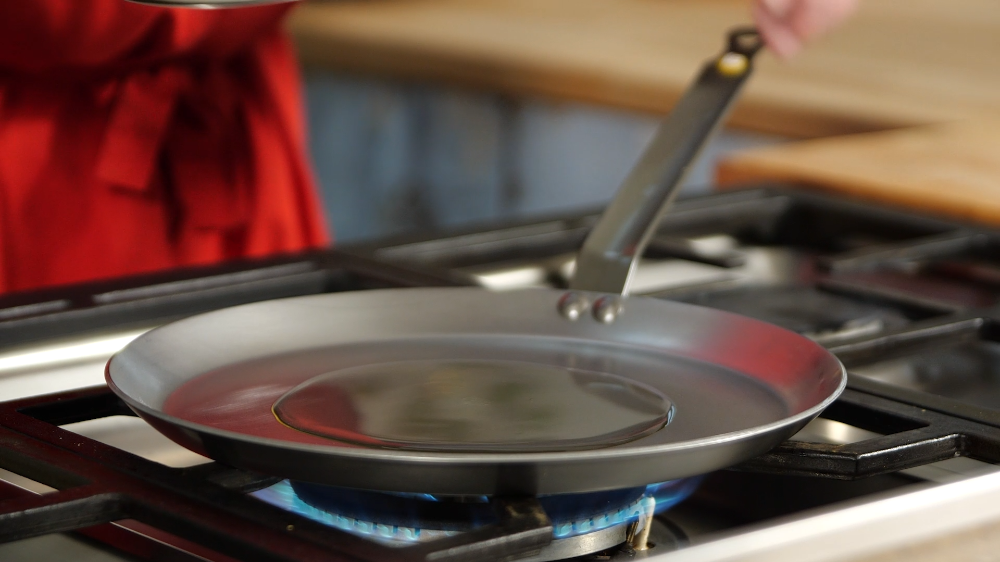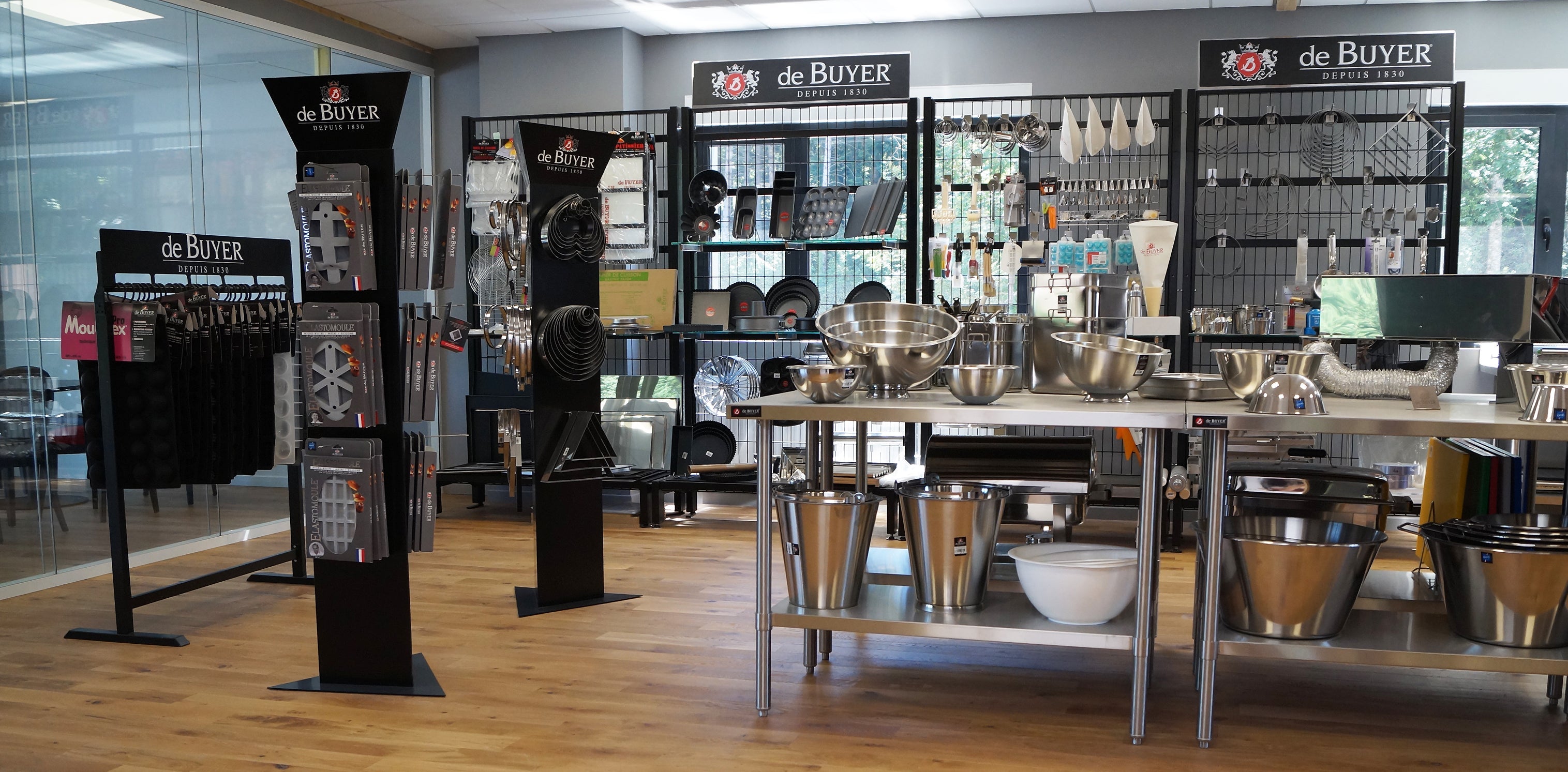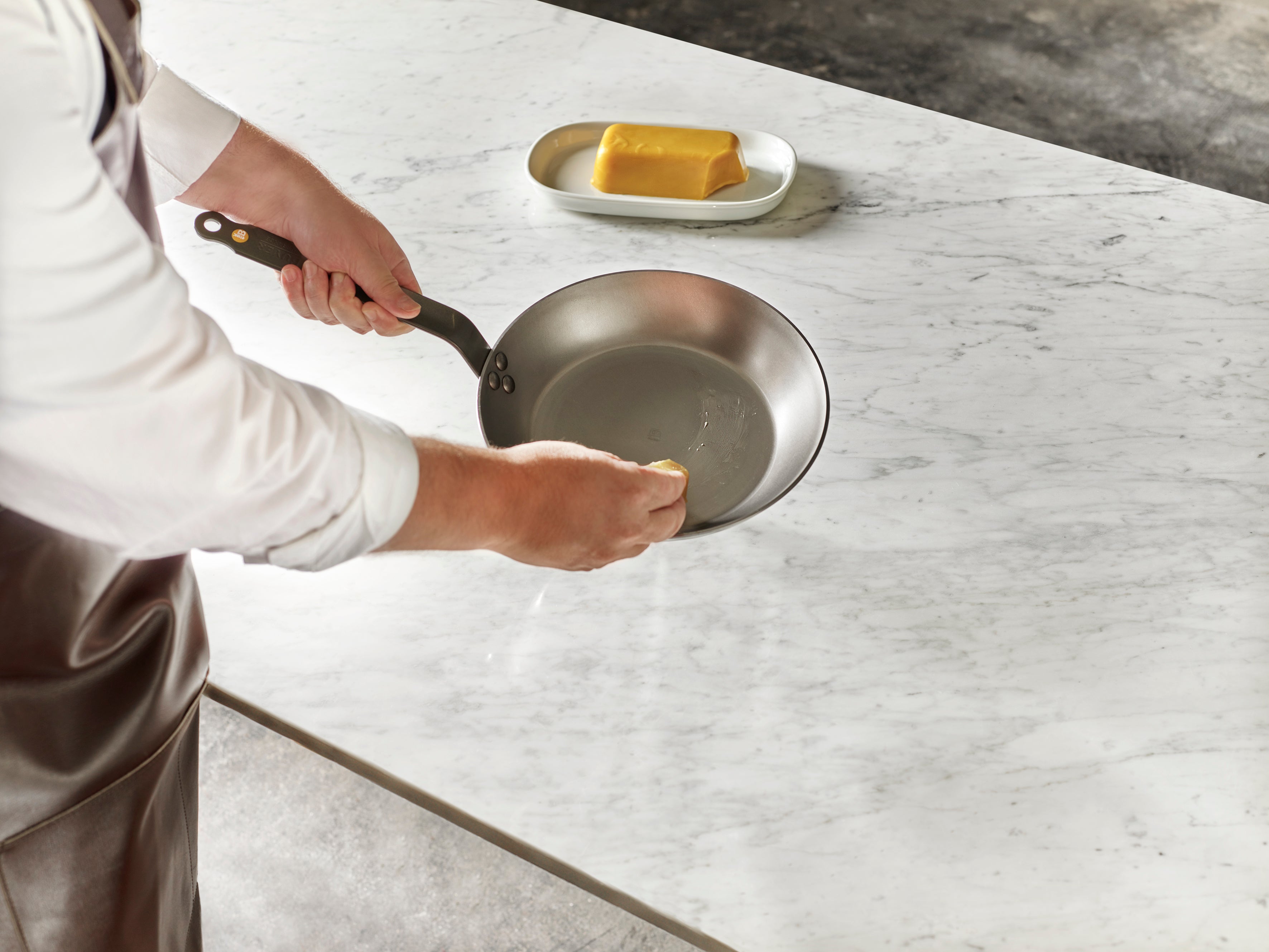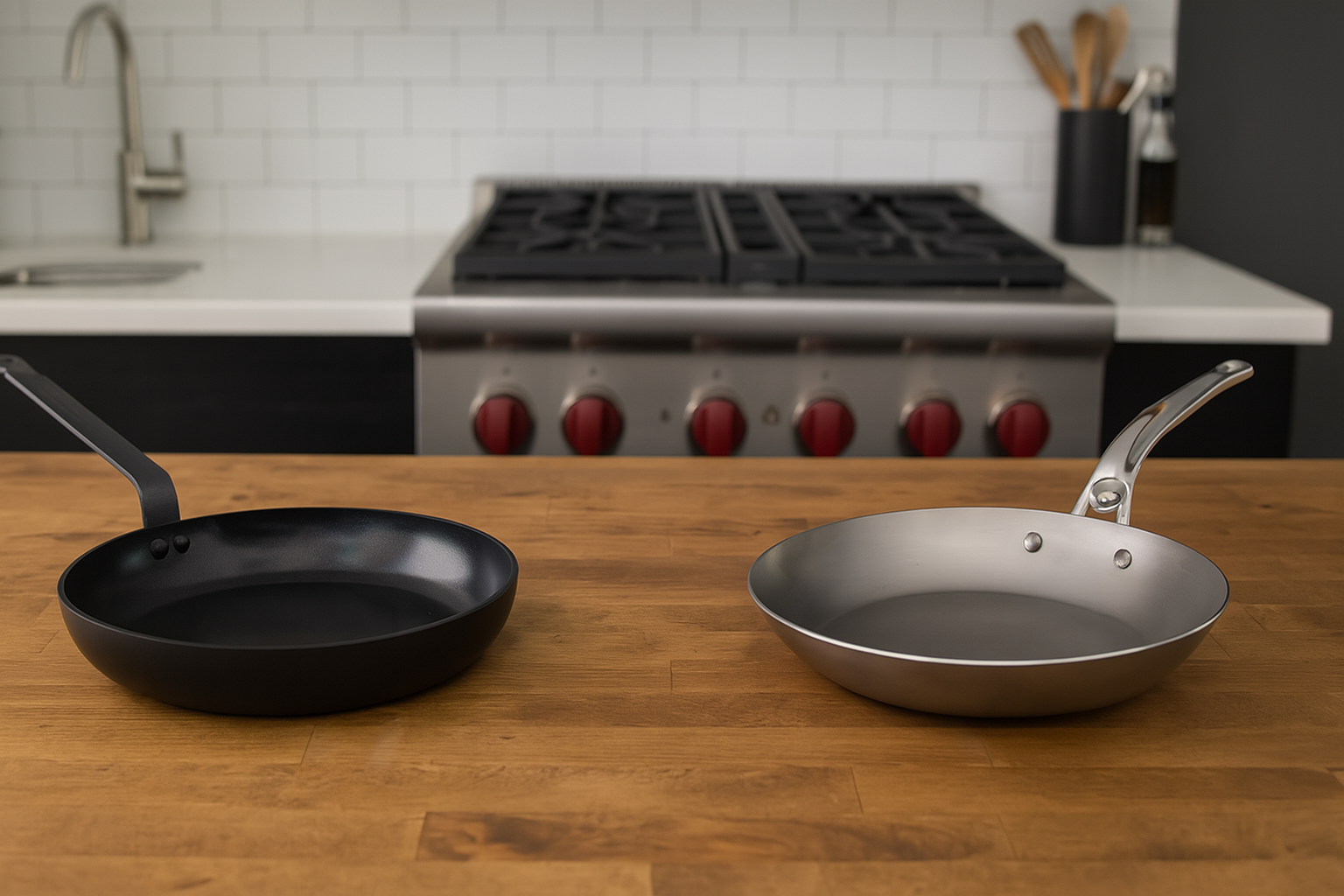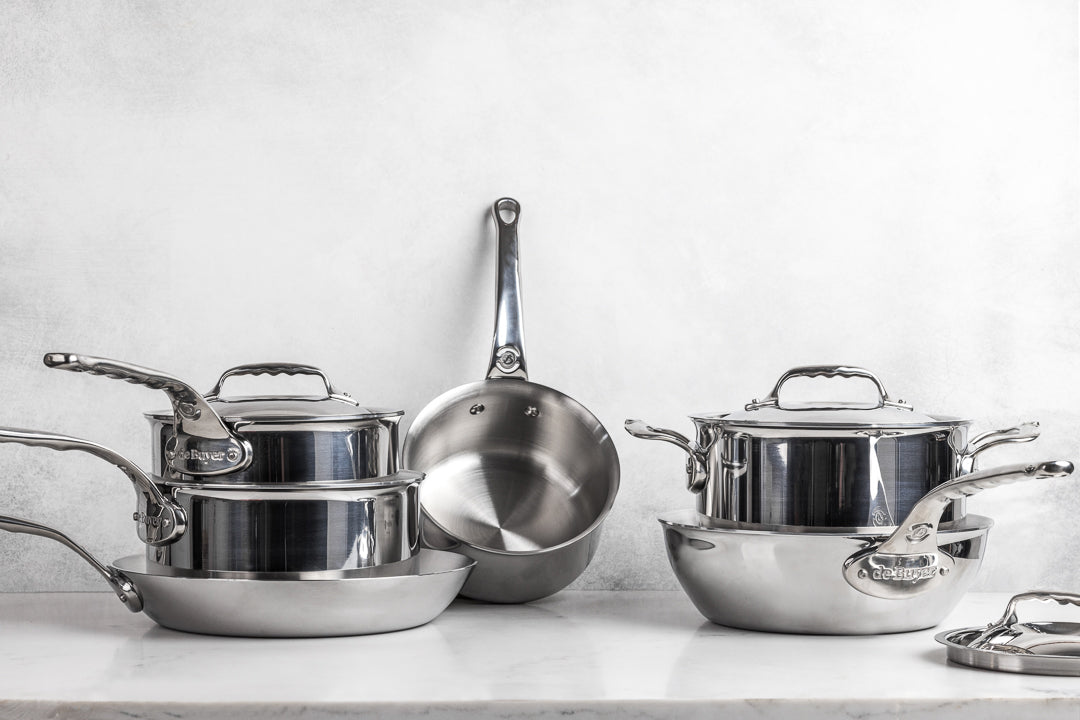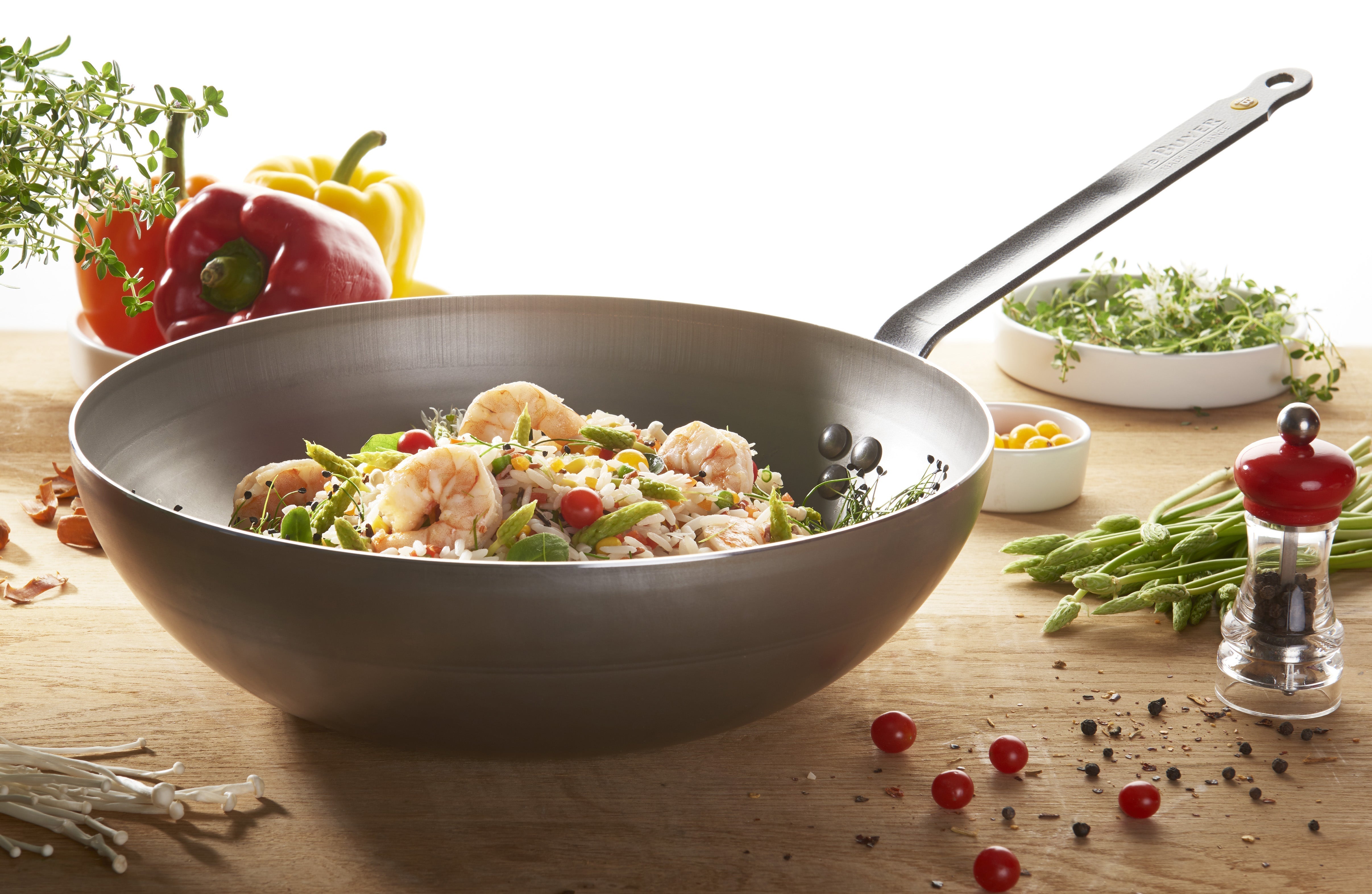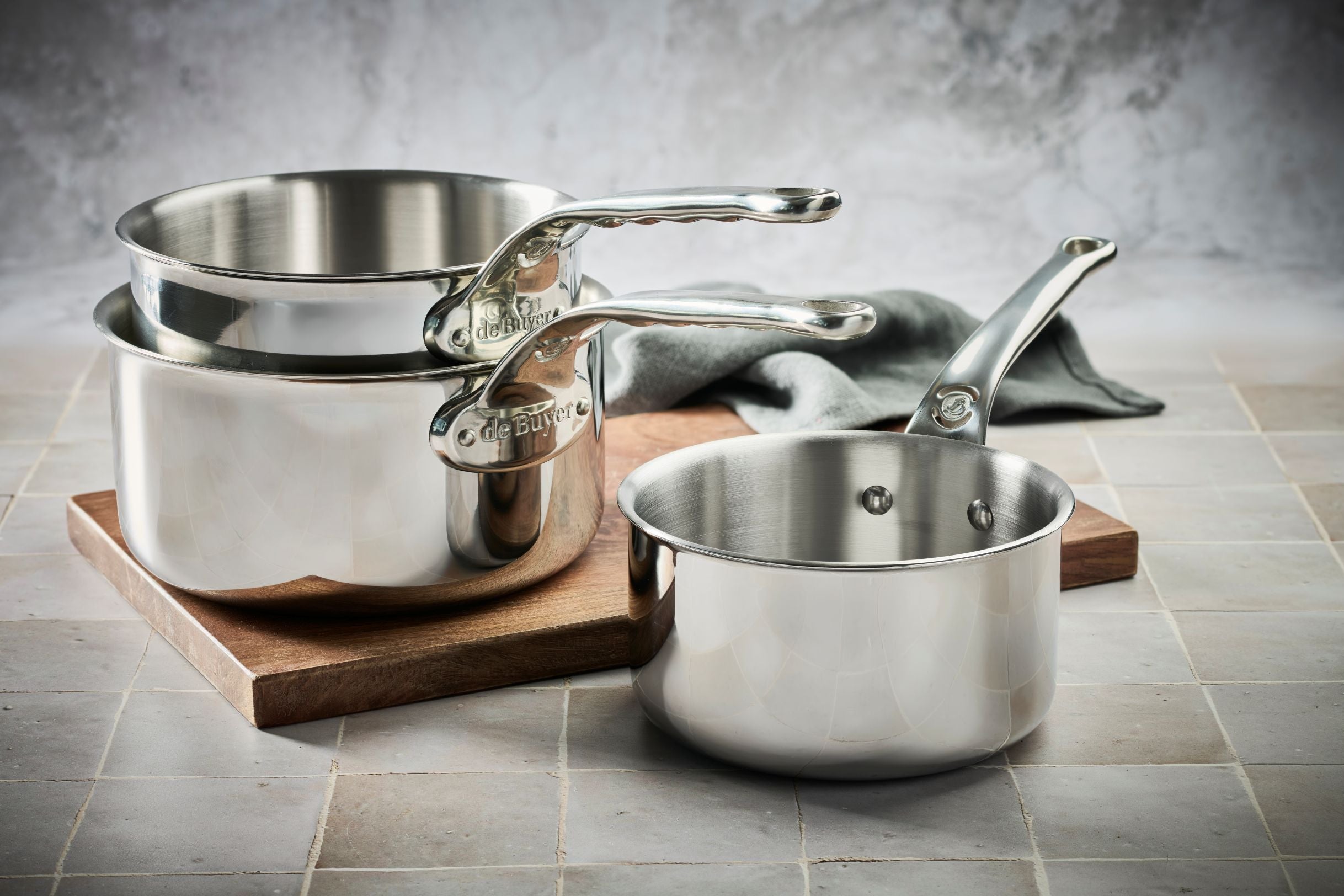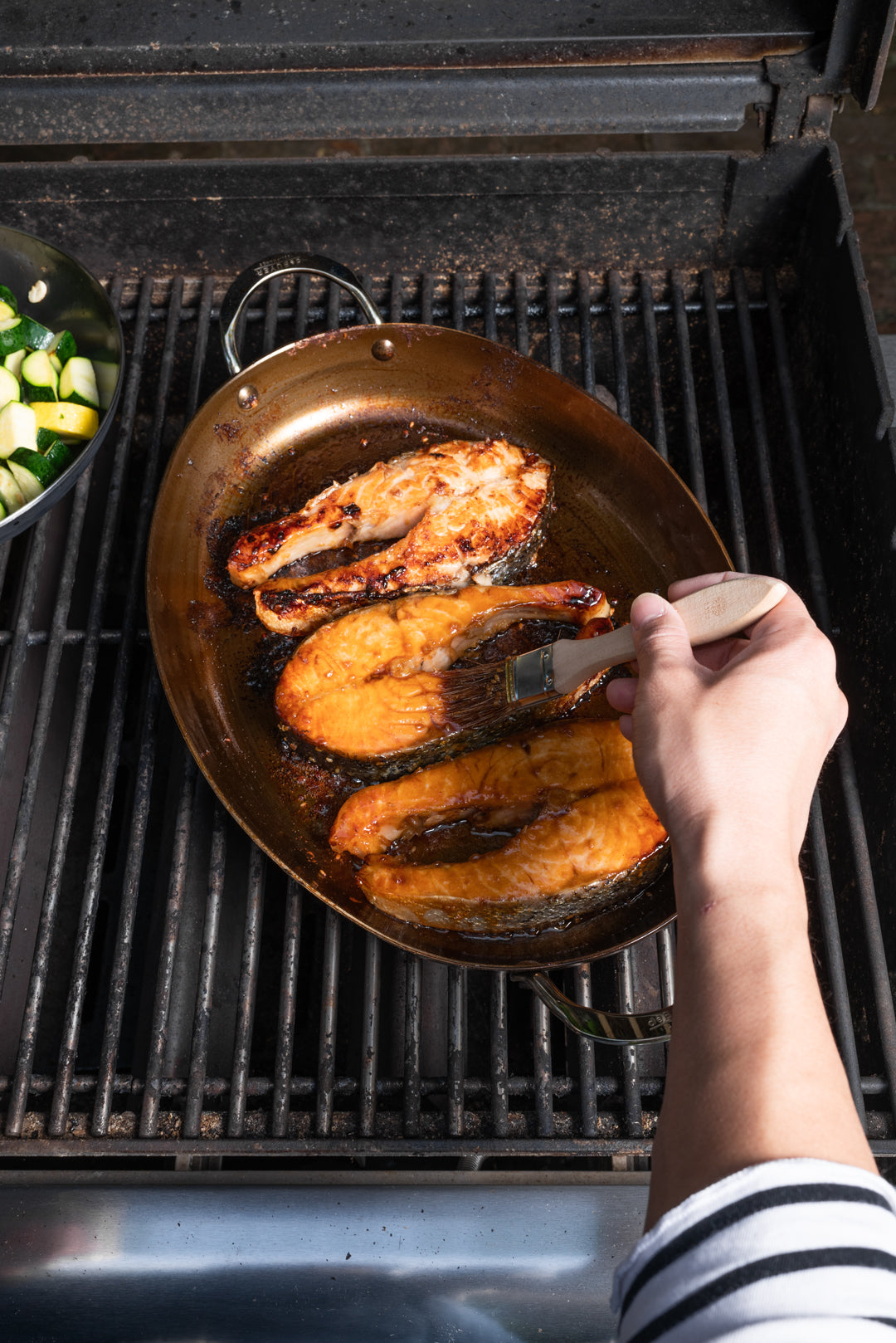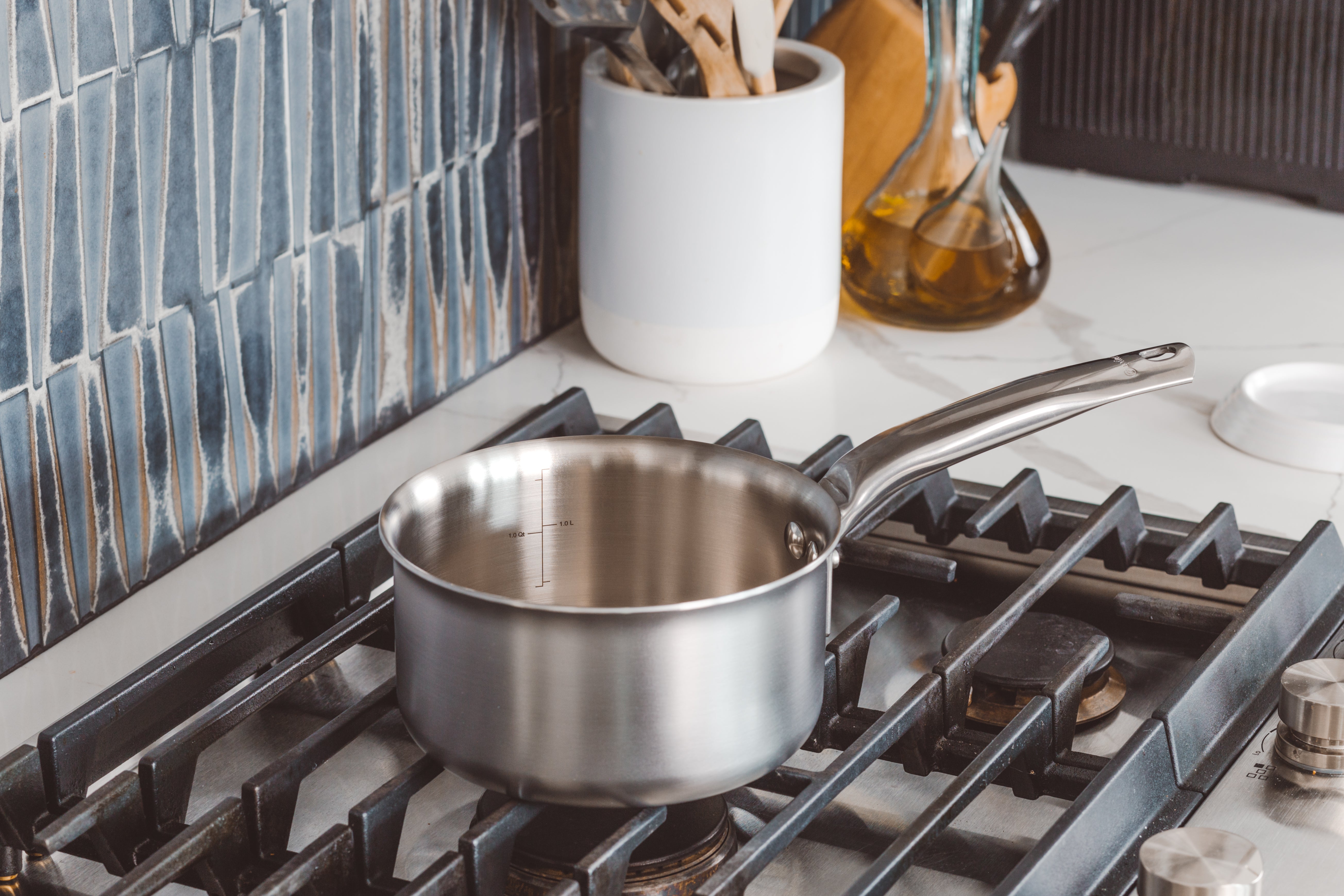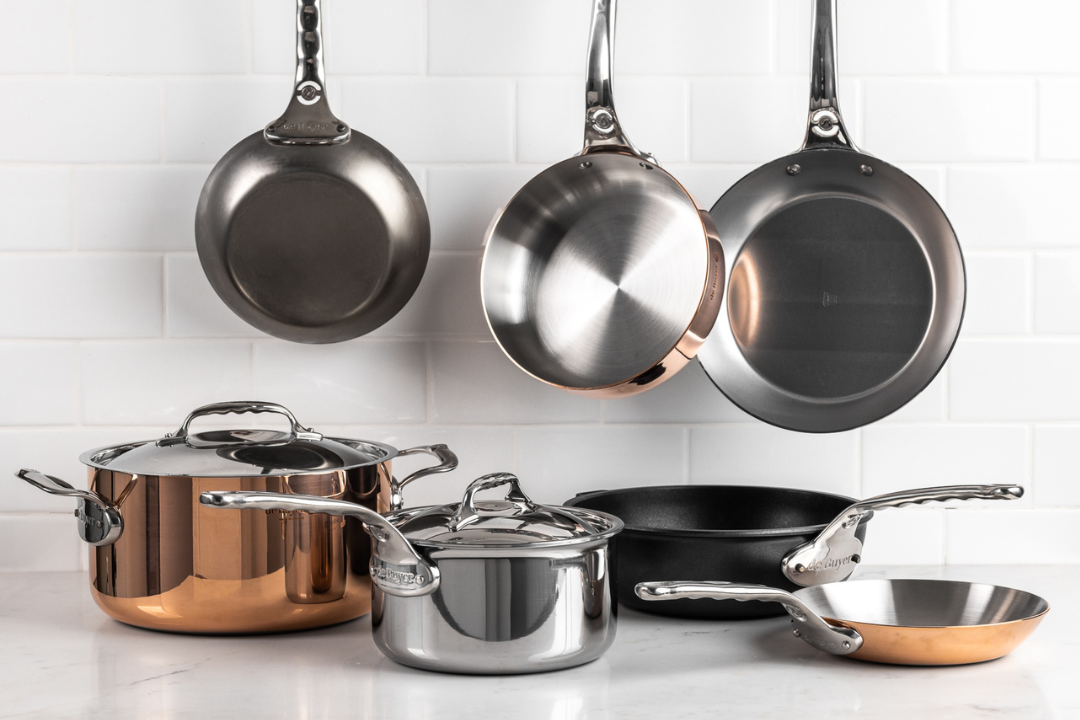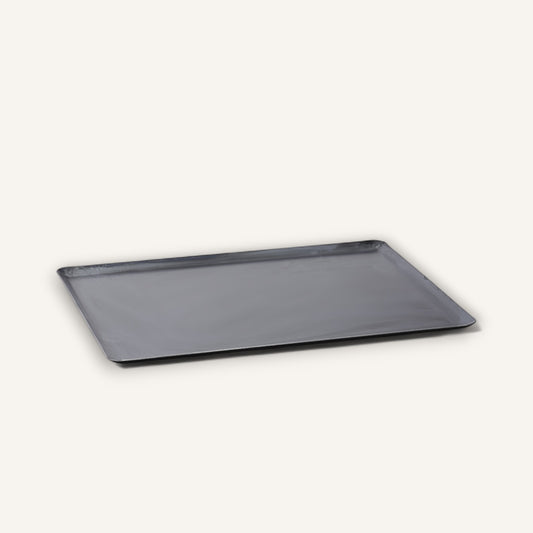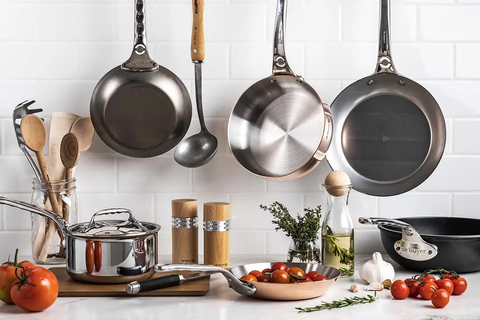
In the market for some new cookware, and unsure of where to start? Different materials, sizes, and uses? We know it can get a little confusing, so let’s start with the basics. What’s the best cookware material? We wish there was an easy answer to this question, but unfortunately, it’s a little more complicated than one may think. Cooking can be as complex or as simple as you would like it to be. This can also be the case with cookware. Most materials can be used in a variety of ways and for various purposes. However, they all have their strengths.
Looking for more great tricks and tips for choosing the right cookware for you? Check out our blogs and visit our store today!
Best Cookware Materials
de Buyer carries several cookware materials: stainless steel, carbon steel, non-stick aluminum, and copper. The decision to create cookware lines using these materials was well thought-out, and de Buyer has created top of the line cookware, relying on these material's abilities. There are pros and cons to each individual type of cookware material, but we hope the following helps you decide which is best for you.

(Image Source)
Known for its ability to heat evenly without burning food, stainless steel is made from an alloy of chromium and iron. Stainless steel is less prone to rusting, making it ideal to last in your kitchen for a long time with minimal upkeep. Multilayer stainless steel cookware offers a fast reaction to changes in heat, allowing them to perform well on gas, electric, and induction stovetops. It is also oven-safe, easy to use, dishwasher safe, and extremely low maintenance.
When to choose stainless steel: for browning, braising, or making sauces be sure to grab your stainless steel. With the ability to achieve intense flavors for everything from seafood to veggies, stainless steel is an easy go-to in your kitchen. Stainless steel is also a great choice for immersion cooking, like preparing pasta in boiling water or making soups and stews. Our ALCHIMY and AFFINITY lines produce high-quality results and are non-reactive, making them the perfect everyday, do-it-all pan.
Related: STAINLESS STEEL VS COPPER COOKWARE
Found in many professional kitchens, carbon steel is a favorite among many. Our MINERAL B Carbon Steel collection is lighter than its comparable friend, cast iron, as they are made from iron and carbon. When seasoned, carbon steel becomes naturally non-stick and is known for being durable and long lasting. In fact, these pans get better the more you use them.
When to choose a carbon steel pan: for super crispy skin on your chicken or fish or the perfect crust on your steak, reach for carbon steel. Additionally, once seasoned, these pans can even be used for the most delicate cooking like preparing a perfect French omelet.
Related: WHICH CARBON STEEL PAN IS BEST FOR YOU?
A no-brainer cookware material purchase for any home chef. These pans are light, easy, and often used in kitchens as they are easy to clean and require minimal fat or oil. It must be noted, however, that not all non-stick pans are created equally. Many scratch easily or contain coatings with harmful chemicals. Our Nonstick CHOC collections are free of any “forever” chemicals like PFOA and PFOS and have a super smooth surface with unbeatable nonstick abilities. Our CHOC Extreme and CHOC Intense collections are oven safe and induction-ready, which is not always the case for nonstick pans.
When to choose non-stick aluminum: This is your go-to for quick and simple breakfasts or weeknight meals. They are both easy to use and clean. When you’re planning a meal that involves sauteing, reheating, or any low-med heat cooking, grab your trusted non-stick.

(Image Source)
Extremely heat reactive and conductive, copper pans are perfect for delicate cooking where you really want to feel in control. Loved by professionals, our PRIMA MATERA Collection, which is made from 90% copper and 10% stainless steel, is manufactured to give the ideal thermal conductivity of copper on the outside with a food grade, stainless steel inner lining.
When to choose copper: if you are making anything sensitive to heat that you want to control, like caramel, copper is perfect because it can heat up quickly and release it as needed, which is not always the case with other materials. If working with an induction stove, our PRIMA MATERA line has options for induction-ready cookware and is also oven safe – a perfect option for your kitchen!
Related: THE BEST POTS & PANS AND WHAT TO DO WITH THEM
So, Which One?
An age-old question, what’s the best? Although one may expect an exact answer to this question, there is not one. Understanding how you will be using your cookware is the best way to determine which material is most important to add to your kitchen. Only you know yourself and your needs best!
If you are looking for a do-it-all go-to pan, then stainless steel is ideal and easy to use. If you are a fan of a non-stick surface and looking for an option to both sear a steak and delicately scramble eggs, then carbon steel is the way to go. Just remember to keep it seasoned! If you’re looking for an easy clean-up and minimal effort for quick meals, a classic non-stick pan might be the best move for your kitchen. Lastly, the beauty of the bunch, copper cookware will really make you feel like a professional chef, all while producing delicious food.
Now that you know what the best cookware materials are and their uses check out the de Buyer store to buy your new set now.
In conclusion, there’s no one-size fits all for cookware. Assess how you will be using it and what’s most important to you. The more you learn and practice in the kitchen, the more you may find yourself grabbing for different types of pans, we know we do! Mixing and matching your cookware materials might just give you the most versatile kitchen. Now, let’s get cooking!





